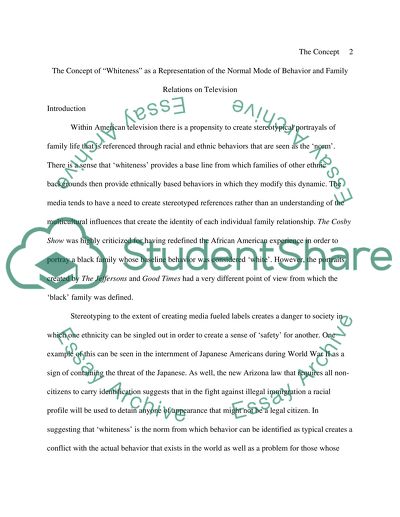Cite this document
(“The Concepts of Race Relations as Reflected in the Media Research Paper”, n.d.)
The Concepts of Race Relations as Reflected in the Media Research Paper. Retrieved from https://studentshare.org/gender-sexual-studies/1566930-examine-whiteness-as-the-norm-of-racial-representations-in-what-ways-is-this-evident-in-recent-media-representation-of-race-illustrate-your-essay-with-detailed-reference-to-two-media-examples
The Concepts of Race Relations as Reflected in the Media Research Paper. Retrieved from https://studentshare.org/gender-sexual-studies/1566930-examine-whiteness-as-the-norm-of-racial-representations-in-what-ways-is-this-evident-in-recent-media-representation-of-race-illustrate-your-essay-with-detailed-reference-to-two-media-examples
(The Concepts of Race Relations As Reflected in the Media Research Paper)
The Concepts of Race Relations As Reflected in the Media Research Paper. https://studentshare.org/gender-sexual-studies/1566930-examine-whiteness-as-the-norm-of-racial-representations-in-what-ways-is-this-evident-in-recent-media-representation-of-race-illustrate-your-essay-with-detailed-reference-to-two-media-examples.
The Concepts of Race Relations As Reflected in the Media Research Paper. https://studentshare.org/gender-sexual-studies/1566930-examine-whiteness-as-the-norm-of-racial-representations-in-what-ways-is-this-evident-in-recent-media-representation-of-race-illustrate-your-essay-with-detailed-reference-to-two-media-examples.
“The Concepts of Race Relations As Reflected in the Media Research Paper”, n.d. https://studentshare.org/gender-sexual-studies/1566930-examine-whiteness-as-the-norm-of-racial-representations-in-what-ways-is-this-evident-in-recent-media-representation-of-race-illustrate-your-essay-with-detailed-reference-to-two-media-examples.


